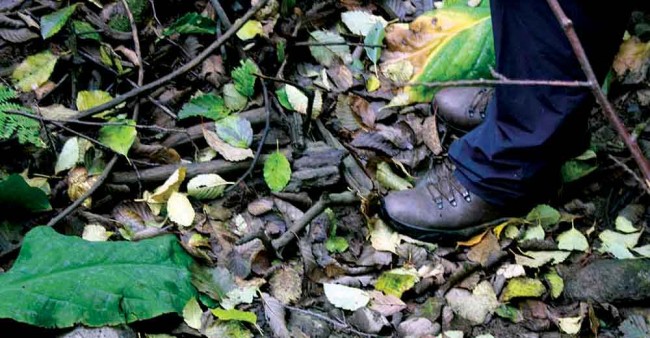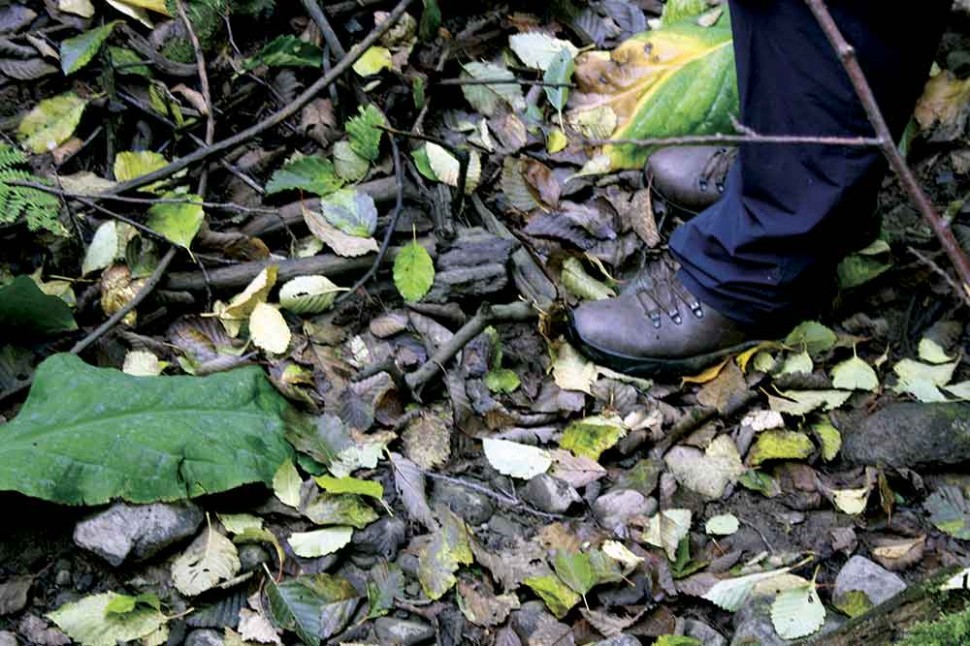
Photo Credit: Norma Kerby
Disappearing waters: How climate change is threatening our fish streams
“There must be a small salmon run up this stream.”
My fellow field worker and I are looking at a dead, half-eaten salmon stretched out on a beach log. Other than the obvious concern that some predator of a good size caught it and enjoyed most of it for lunch, we are watching a school of salmon flickering along the rocky bottom of the lake, unable to enter the stream due to an exposed, above-water sandbar blocking the entrance.
This is not a major salmon stream, but its small contribution to the fish ecology in the Lakelse watershed has some significance, not only for the genetics of the offshoot population, but also for the nourishment provided annually to the predators and scavengers that congregate in a small patch of old-growth coniferous forest next to it. The low-water flow in the stream, with exposed, dry sections of gravel, means the year’s coho run will fail, with subsequent ramifications for the cyclic return of salmon three or four years in the future.
Dry streams in summer were not that common when continuous forests covered much of northwest BC. They acted as reservoirs, sopping up rainfall and melting snow, then slowly releasing it as groundwater throughout the thaw season. With the removal of forest cover by clearcut logging, agriculture, residential growth and infrastructure development, larger amounts of runoff occur after heavy rainfalls or during prime snowmelt time, rather than soaking into the forest floor and being slowly released over the spring and summer. Surface water now leaves the watershed at a much quicker and more erratic rate than when the valleys were forested. Stream levels can rise and fall significantly with each precipitation event, rather than the even-water flows that historically characterized salmon streams.
For fish and other aquatic organisms, rapid, erratic changes in water levels and speeds increase bank erosion, put sediments into the water, make the energy cost of living in a stream higher and often lead to dewatering of channels: that is, leave sections of aquatic habitat without water during periods of low water flow. Exposed streambeds are vulnerable to predation and the death of aquatic organisms, and they provide a barrier to fish movement. Lower water flows can warm stream temperatures, often fatal to resident trout and rearing salmon fry.
Fry left high and dry
This little stream, flowing down a moderate slope into a large lake, is dependent upon snowmelt and rainfall for its discharge. A prolonged rain-free period combined with harvested hillside slopes means that it failed to receive enough groundwater or rainfall to keep even a small amount of water. The result is catastrophic for fish populations. As the forests grow back, will a stream like this be able to again provide stable fish habitat?
According to climate change models from the Pacific Climate Impacts Consortium, University of Victoria and UBC’s Centre for Forest Conservation Genetics, average temperatures in northern BC’s coastal zone have risen close to two degrees Celsius since the early 1900s and are projected to rise another two degrees over the next four decades. For small streams at low elevations, this will lead to lower levels of winter snowfall and earlier spring snowmelt, as well as higher summer stream temperatures, all of which can be deadly for rearing salmon fry.
As to whether summers will have more or less rainfall as climate patterns alter, the models are uncertain. From any perspective, though, small streams without upper elevation feed of stable groundwater and snowmelt will become uncertain habitat for aquatic organisms. The exposed sandbar across the mouth of the little stream will be a more frequent occurrence and small salmon runs will have almost negligible chances of survival.
New threats to old ice
As we walk upstream along the banks, a robin flies up from one of the residual pools, most likely feeding on exposed aquatic insects and possibly even the fry trapped in the receding water. These small, low-elevation streams are in sharp contrast to the snowmelt-fed watercourses originating on mountain slopes, but many of climate change’s future impacts will be similar. A warming climate will dramatically destabilize the volume of water and the temperatures of summer water flows higher up, with effects on aquatic life similar to those we were finding in our little creek.
In the mountainous portions of northwest BC, the stability of mountain-fed stream discharge and fish populations is a direct result of melting subalpine and alpine snowbeds—where snow accumulation can persist for more than one season—and glaciers. During the neoglacial Little Ice Age (approximately 1550 to 1850 AD), lower annual temperatures and larger precipitation amounts in British Columbia’s Coast Mountain ranges were such that large glaciers and icefields re-established themselves. These accumulations of ice have allowed summer stream flows to be maintained at levels and temperatures that, historically, could support substantial Pacific salmon populations.
During the 1900s and, in particular, since the 1950s, this has all begun to change. Rapid glacial retreat is well documented in British Columbia and in our region, as snowbeds and glaciers diminish, the security of summer water flows in major salmon streams becomes less. According to UBC’s climate models, at the current rate of climate warming alpine zones will retreat significantly in size over the next 40 years and, with them, the snowpatches and glaciers that feed the mountain streams and salmon-bearing watersheds.
During major El Nino events, such as 2016, the early warm spring temperatures and low winter snowfalls mean that mountain snowpacks in the Skeena-Nass and Stikine basins are significantly lower than normal. Even if the subsequent summer is wetter, the lack of snow and diminishing glaciers to provide meltwater and groundwater within watersheds leads to vulnerable, erratic flows.
Adding to the problems of less clean, cool water coming from mountainous watersheds is the issue of projected warmer temperatures. Not only will they affect the survivability of resident fish and salmon fry due, in part, to increased vulnerability to diseases both in themselves and their prey, the temperature increases will lead to more rapid evapotranspiration rates: As the air warms, the amount of water being evaporated directly into the atmosphere increases, as does the amount of water lost through transpiration by trees, further decreasing water availability for fish streams due to diminished water tables.
What can be done?
Is there anything that can be done to save snow and glacial-fed watercourses from experiencing low or no summer waterflows as the effects of climate change increase? In Europe, some small glaciers have been covered with matting to decrease their melt rates. In our vast and rugged terrain, it is unlikely that this could be a solution.
If we ever wonder, especially those of us who live on the wetter side of the Coast Mountains, as to whether climate change has much significance to us, go out and visit your local stream and question, will this still be flowing during the summer 100 years from now? The projections are not favourable, but we can only hope that, similar to the coordinated global initiatives to address the ozone depletion issues of the 1980s, global efforts to reduce the rate of climate change may slow the number of salmon bearing watercourses becoming obsolete in a warming world.
An interactive, detailed computer model for climate change projections in British Columbia is available through UBC’s Centre for Forest Conservation Genetics at cfcg.forestry.ubc.ca. This model allows close evaluation of projected climate change for all valley systems in northern BC.





